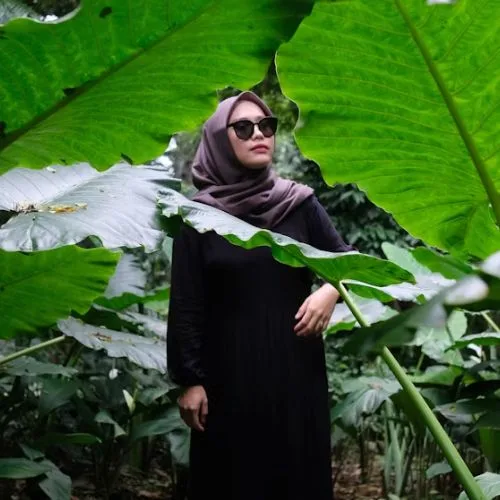Quick Links
People often assume that AI is capable of creating any image, but it does have its limitations. To explore this, I took a series of smartphone photos to demonstrate that AI can only achieve so much—some focused on artistic appearance, others on practical utility.
1 Burst Photo Series
On a recent morning stroll, I captured a burst sequence of images using my iPhone of cyclists crossing a bridge. I aimed for a style reminiscent of a magazine layout or comic strip, illustrating a particular progression. As you can see, I captured shots at regular intervals as the bikers passed by.
While AI excels at generating single images, it struggles with creating cohesive series like these. For instance, when I ask ChatGPT to make slight alterations, the results can differ significantly. Repeating the same prompt often produces entirely different images.
2 Photographing Signs
I’ve discussed how generative AI often fails at producing text within images. Even when I sometimes achieve satisfactory outcomes with tools like ChatGPT, they frequently miss the mark. I’ve encountered numerous instances where the text was difficult to read, which is why I won’t be relying on generative AI for these types of photos any time soon.
Working with text in AI-generated images reminded me how easy and effective smartphone cameras can be. When I want to photograph a sign, all I need to do is point my camera and take the shot.
To enhance the image, I chose to make the sign the focal point. While generative AI can produce backgrounds and bokeh effects, its text generation capabilities leave much to be desired, making smartphone photography the better choice for pictures like this.
3 Leading Lines
Generative AI can create impressive landscapes, but it struggles with complex leading lines. It handles straightforward paths decently, but anything more intricate tends to confuse it. In contrast, capturing leading lines is quite simple with a smartphone.
In this shot, I captured the beach from the walkway, managing to include a lens flare in the image. I appreciated how the light danced on the pathways, and I loved the way the boardwalk curves to the left in the background.
While I could theoretically create a similar image using AI, it would likely struggle with capturing the essence of the leading lines. However, you can always experiment with different AI prompt techniques to boost your chances of achieving the desired outcome.
4 Nighttime Smartphone Photography
Although generative AI can create fascinating nighttime images, it often misses the mark on color accuracy. I think AI is much better suited for daytime photography. In my nighttime smartphone shot, I aimed to capture an architecturally striking building, which can be challenging for generative AI to reproduce.
The light reflections in this image are unique, too. While AI can generate reflections, they often resemble watercolor art rather than realistic photography. For those interested in capturing stunning nighttime shots on their smartphones, consider testing out these night photography apps.
5 Silhouettes
Photographing silhouettes can be quite challenging, and to be honest, I often achieve it more by chance than through intention. Silhouette photography isn’t solely about producing dark images; it’s crucial to capture the right angle of light. In the following picture, the light striking the modern building to the left was perfectly positioned.
AI often falls short in replicating the different shades present in the sky of silhouette photographs, even with precise prompts. It also tends to exaggerate shadows; if I wanted that effect, I could achieve it through my phone’s photo editing app.
6 Macro Photography
AI can produce close-up images, but it has notable limitations. While it excels at generating images of people, it struggles with nature photography, particularly plants. To highlight this, I shot various macro photos of flowers and leaves.
My smartphone was able to beautifully capture the textures of these plants, exactly what I was after. It also rendered the true colors without oversaturation—something generative AI tends to do with brighter tones. However, as I learned during my attempts at macro photography, this technique requires considerable practice.
7 Crouching Down
In my pursuit of new angles in smartphone photography, I’ve found that crouching down creates unique perspectives. While I could request an AI platform to replicate this angle, the results invariably fall short. Having control over the composition with my smartphone makes the process much easier.
In this photo, my primary focus was the signs, so I began by positioning myself beneath the bridge before crouching down further to include a bit of sky. An AI program likely wouldn’t achieve the results I wanted in this instance.
8 Frames Within Frames
While AI is capable of generating images with a couple of layers, it struggles with more complex compositions. I enjoy capturing frames within frames; although ChatGPT can manage this to some degree, the outcome is usually not quite right. I aimed to create a shot that would challenge the capabilities of AI.
In this image, I made sure to include the car in the distance—something I believe AI would have difficulty with. Since it typically struggles with complex patterns, I doubt it would successfully create the lines on either side of the bridge. AI tends to perform best with curves.
While AI offers valuable capabilities, it isn’t always the best option for every type of image. Smartphone photography often surpasses AI-generated images, and although this may evolve in the future, I still trust smartphone photos for their quality and authenticity.







